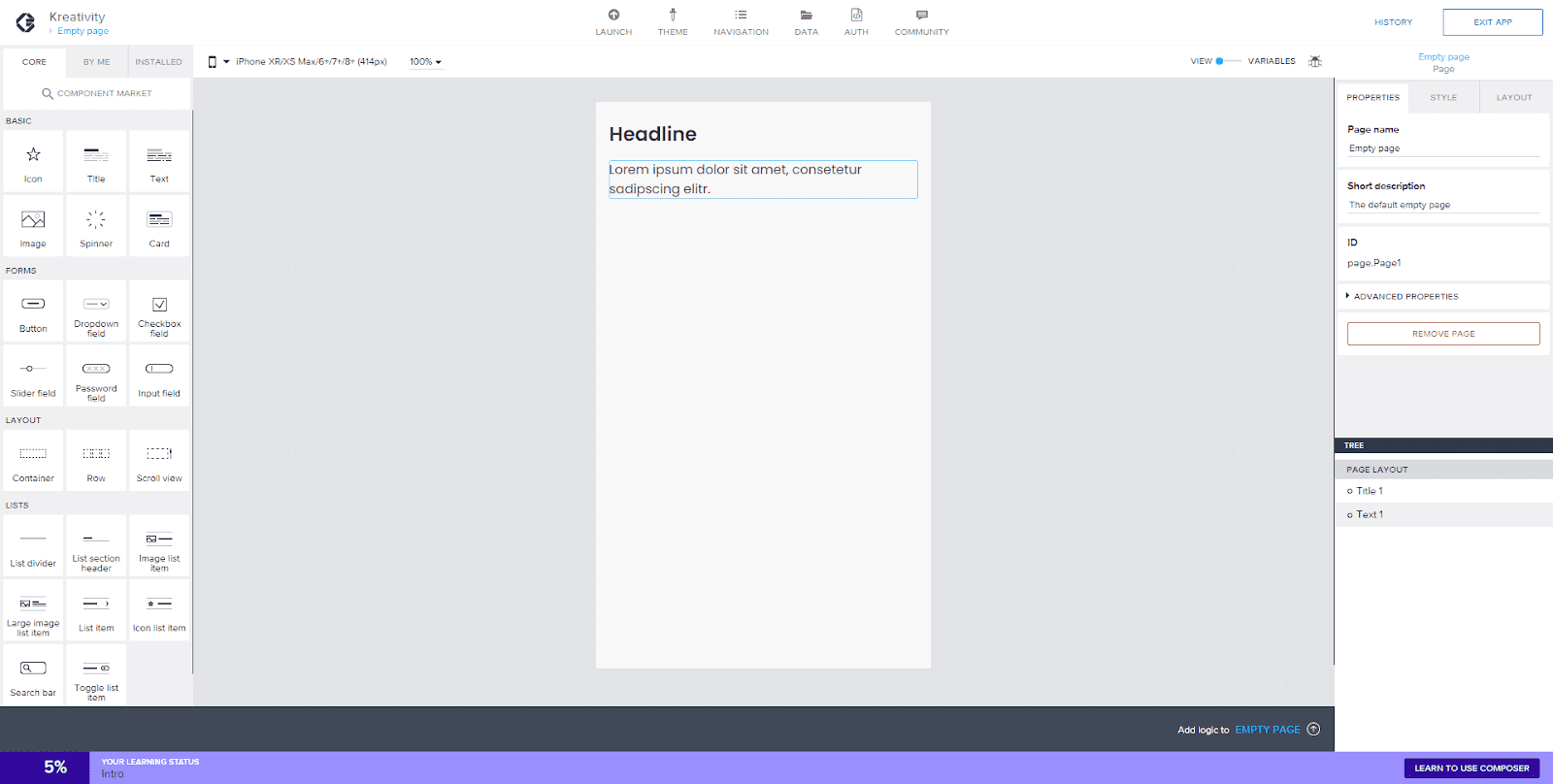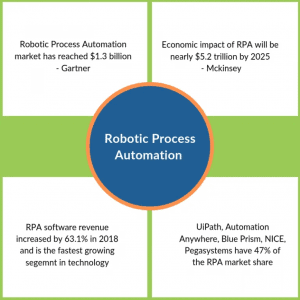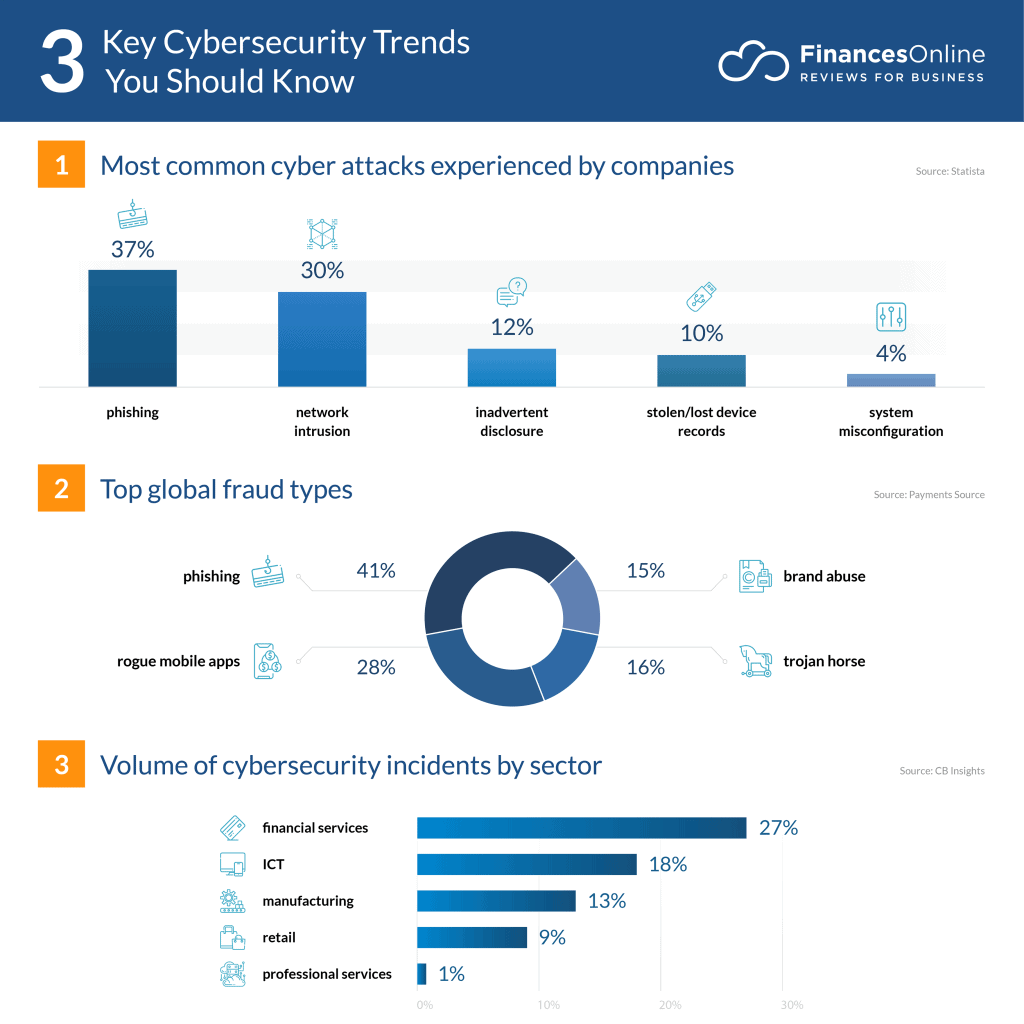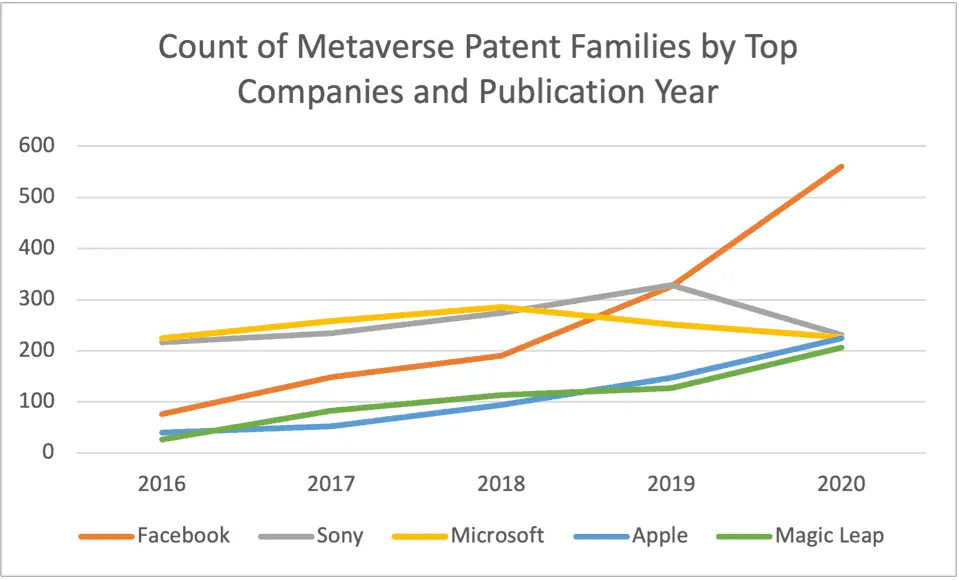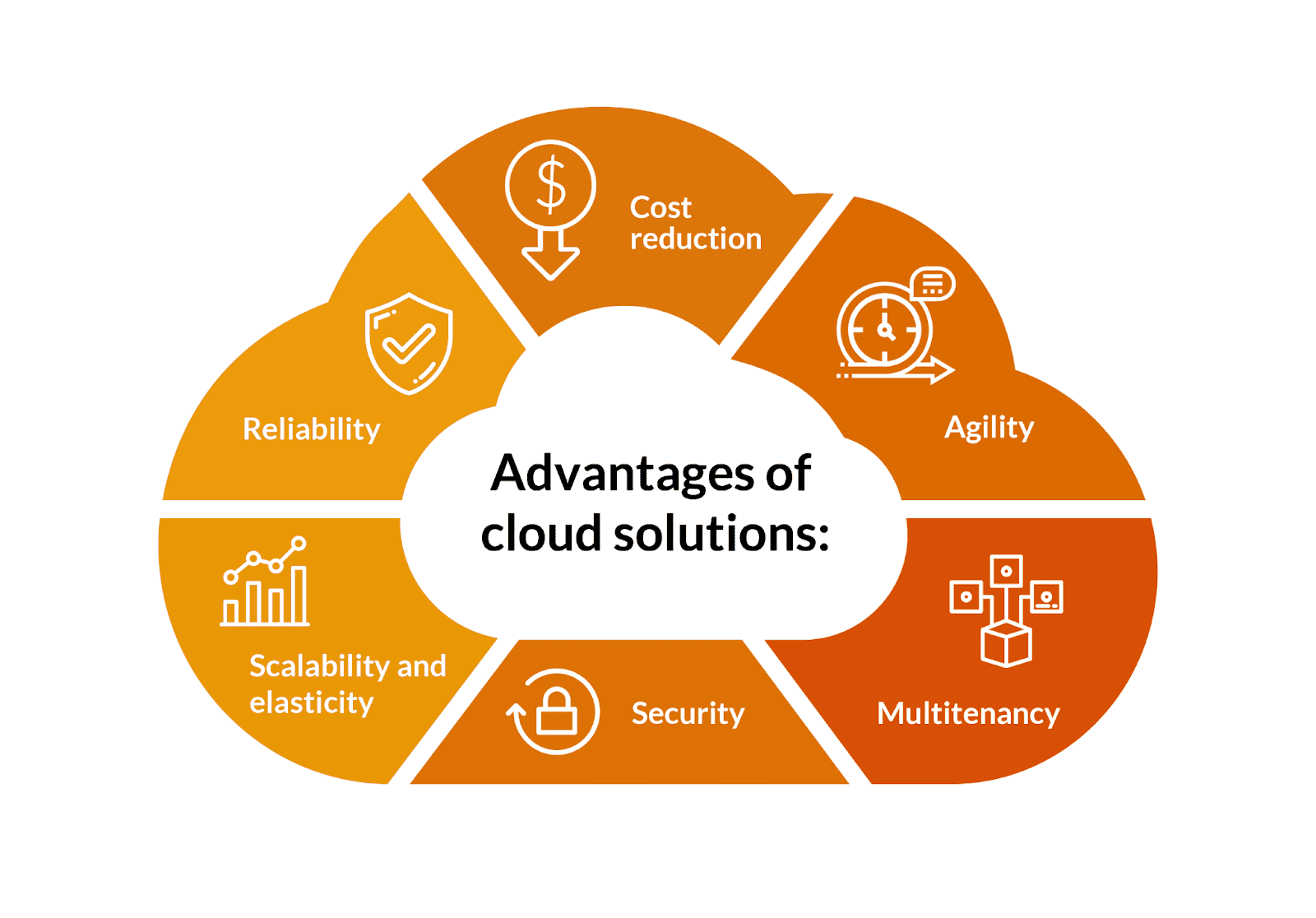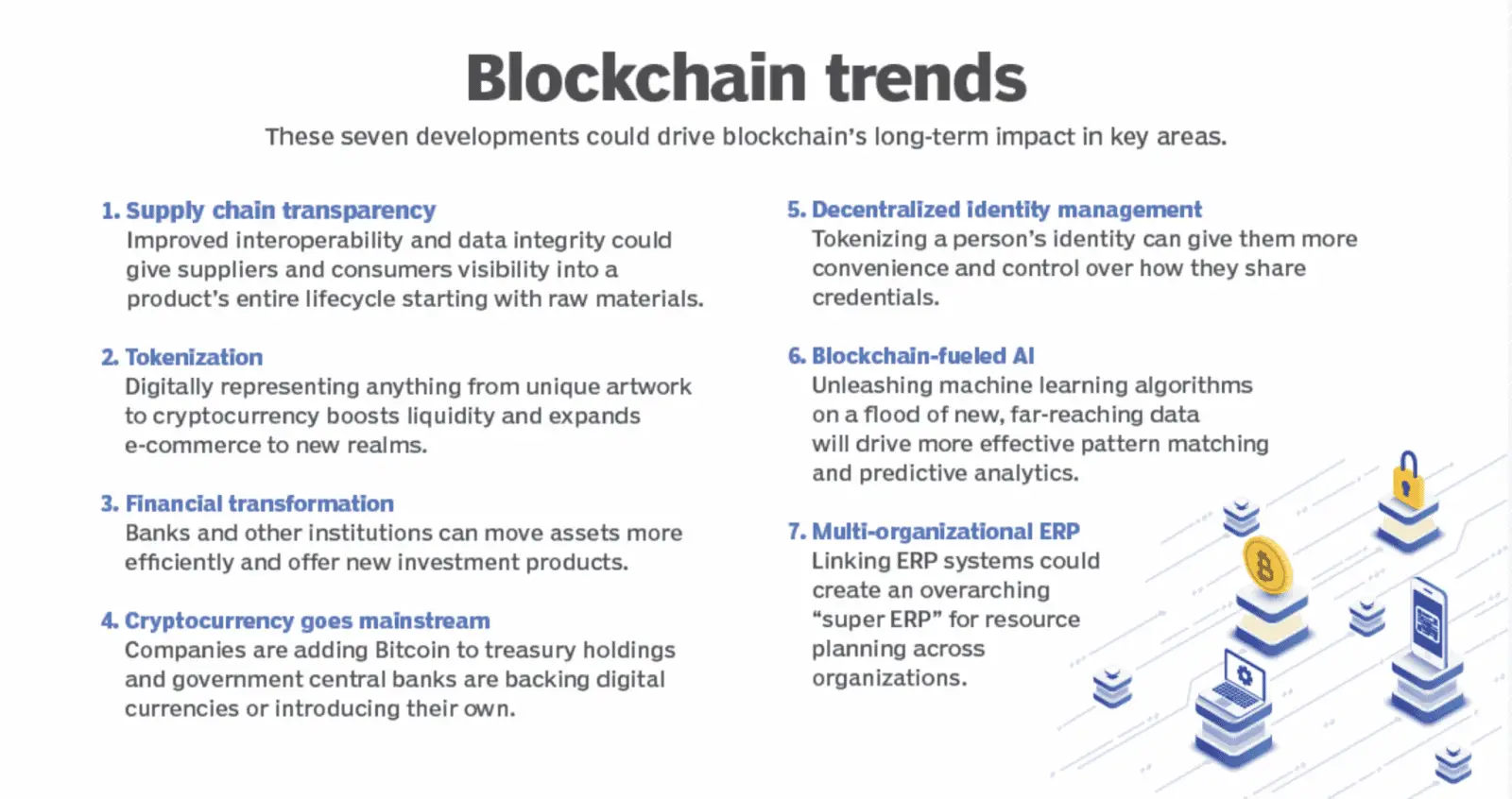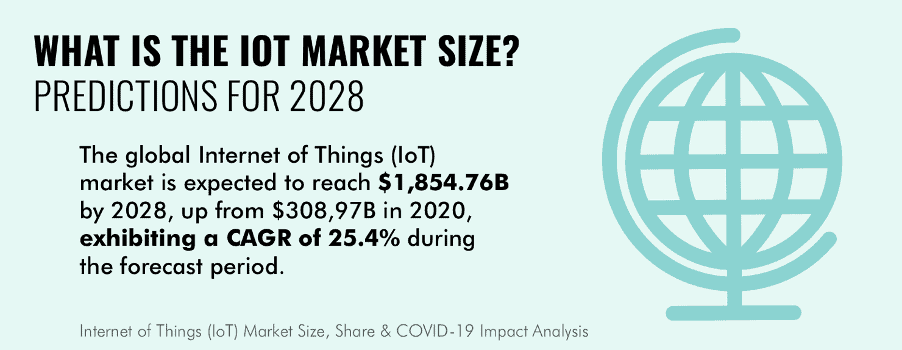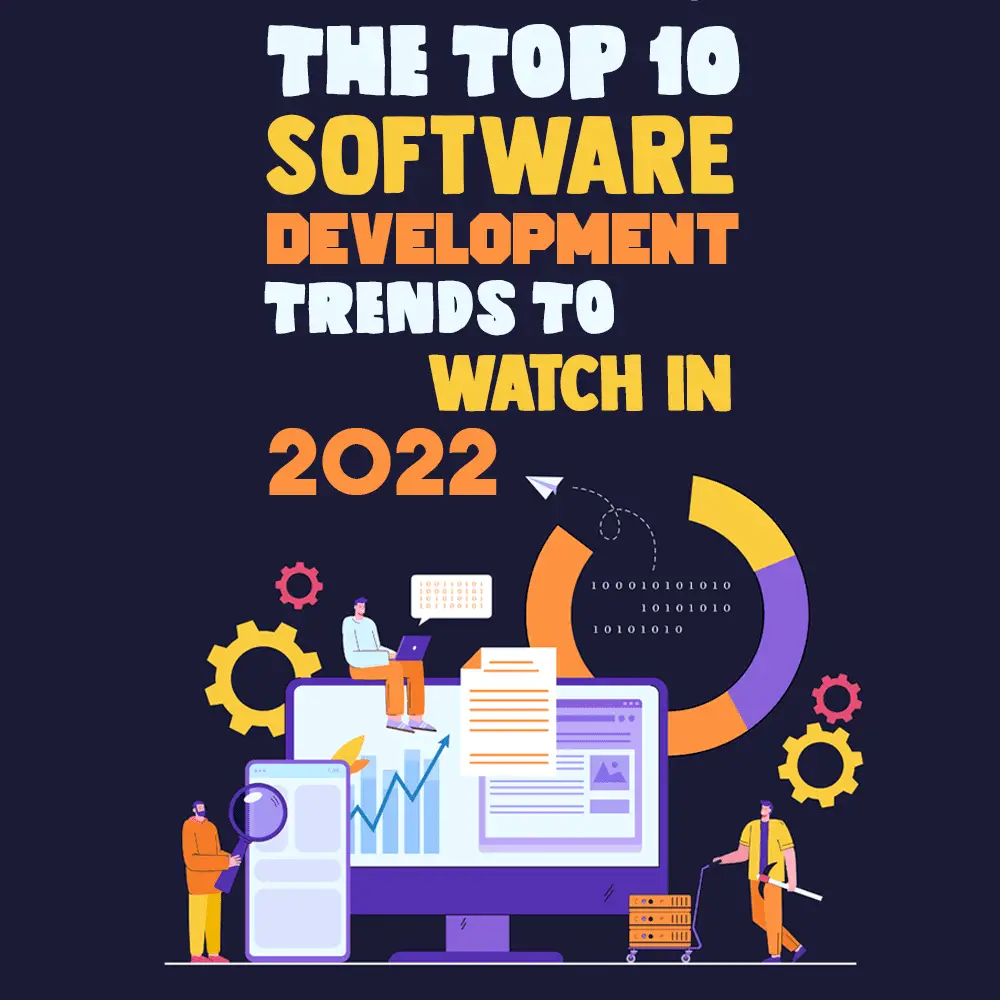 Software applications are constantly evolving, and technological innovation further bolsters this development. Standard software practices in use today might no longer be applicable in the next five years.
Software applications are constantly evolving, and technological innovation further bolsters this development. Standard software practices in use today might no longer be applicable in the next five years.
The ongoing pandemic has further pushed businesses to look beyond the traditional mode of operations.
As we move into a new year, the need for ever-changing data volumes and increasing computer and network speeds will continue to be the most important driver of digital transformation.
I’ve collated the upcoming software development trends to look out for and include in your 2022 strategies.
Artificial Intelligence
Software development businesses don’t want to miss out on leveraging AI to boost customer experience. Artificial Intelligence enhances decision-making capacities for businesses and provides a meaningful platform for digital transformation.
Starting from Microsoft to mega giant Google, all well-established and even new companies benefit from this trend. Nearly 47% of digitally mature enterprises have a defined AI strategy.
Adding AI and machine learning to existing technology will be important in improving the user experience.
Amazon, for instance, is getting in on the trend of using AI with its checkout-free physical stores in Seattle, Chicago, and San Francisco, empowered by AI-driven sensors and cameras. The technology can tell which items a customer has picked up and automatically charge them as they walk out of the store using the Amazon Go app.
On the other hand, Netflix has put artificial intelligence and big data at the core of its operations. The company uses AI algorithms to recommend new content to its users. The personalized feed that you see whenever you open the app comes into existence when Netflix’s AI algorithm sifts through your viewing history and detects patterns in your behavior.
No-Code Development
Low-code/no-code development platforms are a visual software development environment that allows developers to drag and drop application components, connect them, and create mobile or web apps without coding.
Low-code/no-code (LCNC) programming is a must for businesses that require the ability to move forward quickly with new initiatives. It gives non-developers or others without a technical background to create solutions to business problems. It also allows teams to create minimum viable products quickly and at a lower cost based on user feedback.
Next-generation visual app platforms like AppGyver Composer use LCNC programming to resolve data-related technical problems such as backend integrations and secure data transfer. These platforms allow users to drag and drop elements, such as icons, buttons, and input fields, to a screen that mimics a mobile device.
LCNC platforms might seem like child’s play, but software developers have already used them to create sophisticated applications. Moodico is one such solution. It allows users to track their moods based on their behaviors. Using AppGyver, Moodico’s creators successfully translated a complicated concept into a simple app. It has the potential to change the way users perceive their mental health.
No-code programming can also work alongside existing legacy systems, allowing your engineers to keep what works and revamp what doesn’t.
Automating Repetitive Tasks
Robotic process automation (RPA) uses software to automate extensive and repetitive tasks that previously required human intervention. According to Gartner, the global RPA software market is estimated to reach $1.89 billion by the end of 2021.
RPA allows the configuration of a “bot” to capture and interpret tasks such as processing transactions, transforming or handling data, and integrating it with other digital systems.
By offloading routine work from the human workforce to digital workers, RPA enables businesses to focus on higher-value work.
An excellent example of using RPA would be the onboarding of employees or contract review. It is also being leveraged to reduce dependency on human labor and bolster production capacity.
The most significant advantage of deploying RPA is that employees can focus on more creative tasks than manually conducting repetitive procedures. For example, KeyBank automated its accounts receivable and invoice delivery process using Billtrust’s RPA platform, Quantum Payment Cycle Management.
By incorporating RPA into its processes, Keybank successfully optimized its invoice delivery and also reduced the scope of human errors. The bank is now looking into implementing RPA in more of its processes.
Changing Demands of Cyber Security
As the world advances towards a digitally influenced era, a startup cannot afford to underestimate cyber security threats. Random cybercriminal activities will cost businesses a whopping $6 trillion by 2021.
Therefore, software companies can no longer rely on traditional cyber protection strategies such as installing anti-malware and perimeter firewalls to meet the changing demands.
Bitglass, one of the leading cloud-security startups uses cybersecurity to deliver data and threat protection for any interaction, on any device, anywhere. What makes Bitglass unique is its use of a cloud security platform to combine cloud access security brokerage and on-device secure web gateways to secure endpoints across various devices.
According to PwC, 55% of businesses are increasing their cyber-budgets for 2021, and 50% say that cyber and privacy will be pivotal to every decision or plan.
Being mindful of the stats, I do not doubt that cybersecurity startups will see increased funding and be at the forefront of innovation since CEOs of every big or small enterprise now have cybersecurity at the top of their agenda.
Greater Adoption of the Metaverse
The Metaverse is a highly-immersive virtual world that combines social media, online gaming, virtual reality (VR), augmented reality (AR), and cryptocurrencies to allow users to interact digitally.
At the moment, big brands from various industries are dipping their toes into the Metaverse.
With people getting used to augmented reality (AR), the scope of Metaverse looks promising. Whether you’re doing a virtual tour of a new property or getting a virtual makeover with new clothing or jewelry, the Metaverse is real.
Facebook has made the first big announcement about their Metaverse intentions and is building a patent portfolio to back up with optimistic aspirations.
The social-networking giant is making significant investments in the technologies that are likely to drive the creation of the Metaverse.
The Metaverse is poised to be the next big thing, and programmers in the know have already started to incorporate VR and AR technologies into their workflows and products.
Improved Web Apps
Developing and maintaining your website to keep up with website development trends is essential if you intend to stay relevant in your niches. For example, responsive web design is already old news as far as users are concerned. They now want websites to look more like apps. A new standard called Progressive Web Apps (PWAs) can help businesses attract new customers and retain existing ones.
Progressive web apps (PWAs) are mobile websites that have the functionality of an app. They offer users an experience similar to using a mobile application while still being available to users who do not have access to updated mobile devices.
Progressive web app developers optimize web applications since they provide app-like navigation and excellent visual content. It is implemented with the help of Javascript elements, called “service workers”, that allow offline app execution and data storage.
PWAs enable websites to load in no time and work offline in apps like Google Maps. Companies like Starbucks, Uber, Pinterest, and Twitter have already created PWAs to provide a better user experience.
For instance, Uber created a progressive web app that works even on 2G networks. So, regardless of your network speed, device, and even location, you can book a ride using Uber’s PWA. This feature is handy, especially if you are in a location with intermittent mobile coverage or using a phone not compatible with the app.
PWA technology enables users to access a native-like mobile version of their favorite website with a single tap. By boosting the performance, accessibility, and user interaction, progressive web app developers ensure that these apps are smooth, engaging, and reliable.
Increased Focus on Cloud
Companies across all verticals are exposed to threats by the cloud-first and cloud-native startups tapping into the cloud’s speed, flexibility, and cost-effectiveness to disrupt traditional ways of conducting business.
Serverless computing is a relatively new concept gaining popularity in the market from providers including Amazon (AWS Lambda), Microsoft (Azure Functions), and IBM Cloud Functions.
Referred to as “functions-as-a-service,” serverless computing means organizations aren’t forced to lease costly servers, pay fixed amounts of storage or bandwidth, or be accountable for data protection owing to unforeseen disasters.
For instance, Nordstrom created its new Hello, Retail! framework using serverless technology. By building its sales platform on AWS, Nordstrom enhanced its user experience and the overall performance of its operations. The company now has a serverless stream of everything that their sales team has ever done in one place, which means simplified tasks, better performance, and higher customer satisfaction.
Blockchain
The simplest way to think about blockchain is as a distributed ledger in which a record of transactions is stored across several computers that are linked in a peer-to-peer network. The Blockchain-as-a-service model of distribution has been pivotal to the rapid adoption of software technology trends, including cloud computing, the internet of things (IoT), and AI.
Blockchain has long been portrayed as the next big thing, with companies including Amazon, IBM, and Microsoft all developing tools enabling businesses to leverage the technology without investing huge capital in infrastructure. In 2022, companies who started with blockchain technology early are expected to capitalize on their investments.
In the latest wave of blockchain trends, banks can provide a single digital source of ID information allowing for the seamless exchange of information. This would likely result in automation of opening new accounts, reduced resource and cost, and maintaining data privacy.
However, blockchain is also potentially useful for any process that involves tracking data movement, so it has applications across supply chain, logistics, and provenance.
Prominent examples of blockchain networks have been cropping up in the supply chains of various businesses. For instance, IBM Food Trust delivers a sustainable demand and supply chain that aims at reducing food waste and bringing inclusivity to the food industry.
Blockchain can bring more privacy into the digital landscape by tokenizing an individual’s identity. It also has a variety of applications in the healthcare sector as well. The technology facilitates the secure transfer of patient medical records, manages the flow of medical equipment and supplies, and helps healthcare researchers decipher genetic code – all while observing stringent privacy laws.
Akiri, for instance, operates a blockchain network-as-a-service that is optimized for the healthcare sector, helping protect patient health data when transporting it.
Unlike traditional electronic medical record systems, Akiri acts as a secure private network that validates and transmits patient data through a set of codes instead of storing it in a central server. It uses built-in security measures to verify the identity of anyone who tries to access or change the data it transmits.
Expansion of IoT
Businesses are confident that the Internet of Things (IoT) will play a vital role in the future success of their trade, despite a bumpy past couple of years.
So why is everyone so intrigued about IoT expansion? Because the benefits are extensive- reliability, simplification, transparency, traceability, cost efficiency, zero error, faster transactions, and improved data quality, to list a few.
IoT partnered with AI and ML technologies that will help process large amounts of data effectively, synthesizing it to make wise and informed recommendations and decisions.
Cloud platforms will help reduce the time needed for the design, installation, monitoring, maintenance, and reporting systems. For instance, the Internet of Things in the logistics vertical has evolved rapidly. The location and route management solution of IoT for logistics is quite popular. It enables a logistics manager to monitor the location of their trucks in real-time.
GPS tracking systems and geofencing techniques allow tracking from remote locations. Thus, enabling the logistics companies to track driver activities and ensure timely cargo delivery.
Apart from providing fleet management services, IoT in logistics also facilitates the storage of goods and management of stock levels. A logistics ecosystem allows a company to have complete transparency in its various operations, further supporting seamless inventory management.
Increased focus on UX
IIn today’s age of omnichannel digital experiences, software engineers and UX design teams work together more closely than ever to deliver seamless user experiences across the web and mobile.
UX design teams collaborate with engineers throughout the software development life cycle to design a consistent user experience.
From production to quality assurance, increased focus on UX ensures adherence to the design and creates workarounds against unforeseen technical limitations.
Understanding the user journey is key to delivering consistent web or mobile applications. UX designers cooperate with developers by providing user-focused designs, prototypes, and wireframes to dabble with.
Stripe is a classic example. Their page design leverages design and coding to drive a user’s eye toward specific actions. The overall design is easy to use and navigate.
UX-focussed development helps software engineers set the right requirements and expectations for the product. It also makes it easier for software engineers to understand the development direction, analyze the capacity, and divide the project into phases.
Be Ready for 2022
Predicting the future of technology is a tricky adventure. Modern software development trends present a plethora of possibilities to take advantage of.
From artificial intelligence, no-code interfaces, cyber security, blockchain, to IoT, cloud computing, Metaverse, and more, the software development sector will continue to flourish in the upcoming years.
Therefore, startups will need to buckle up and focus on adapting newer strategies while steering themselves away from traditional or outdated operations for reaching maximum production potential effectively.

